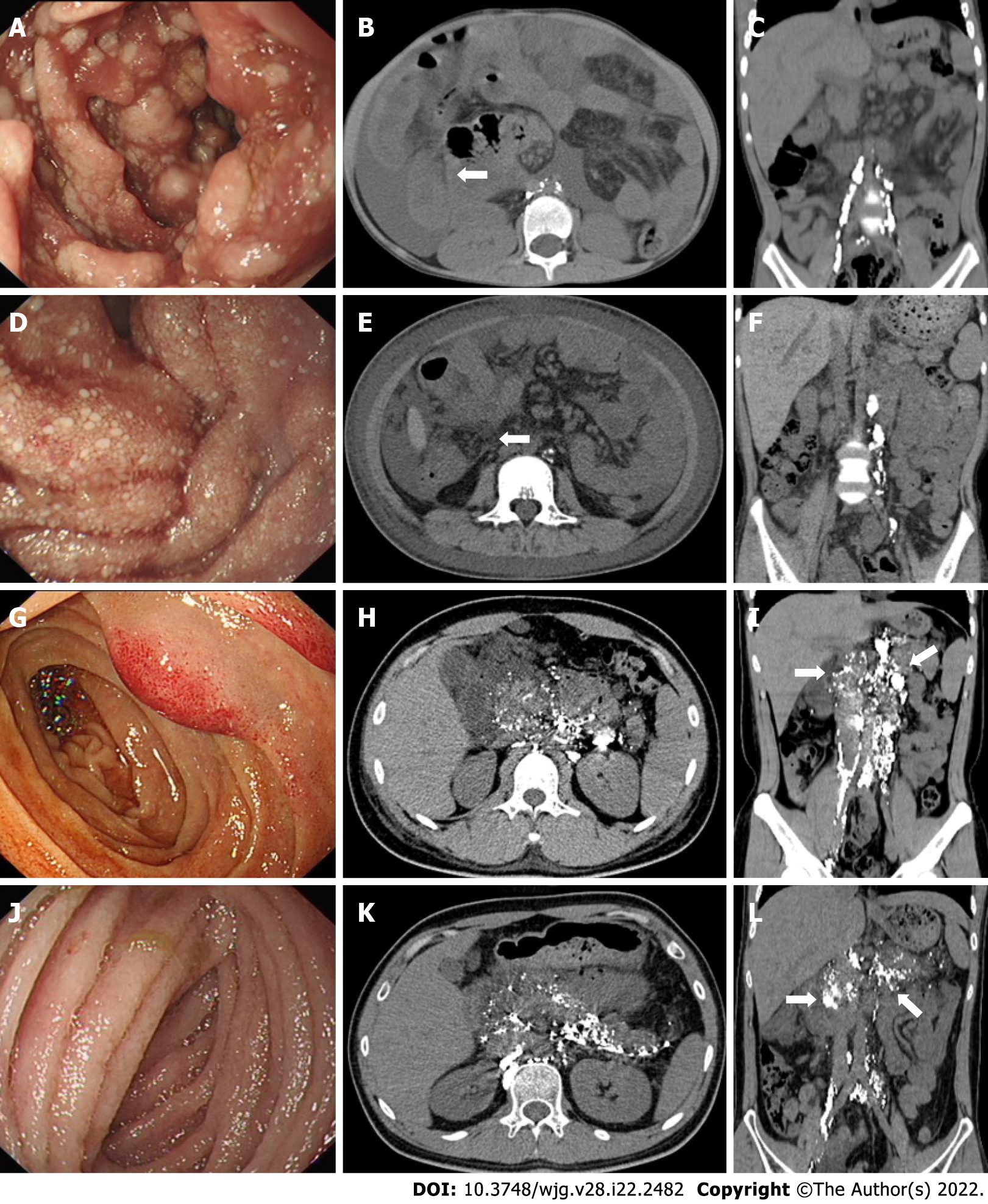Copyright
©The Author(s) 2022.
World J Gastroenterol. Jun 14, 2022; 28(22): 2482-2493
Published online Jun 14, 2022. doi: 10.3748/wjg.v28.i22.2482
Published online Jun 14, 2022. doi: 10.3748/wjg.v28.i22.2482
Figure 3 Post-lymphographic computed tomography images corresponding to the four types of primary intestinal lymphangiectasia under endoscopy.
A-C: Nodular type: The post-lymphographic computed tomography (PLCT) corresponding to nodular type indicates the intestinal wall thickening of the small intestine (white arrows), increased mesenteric density, and no contrast agent distribution in the mesentery and intestinal wall; D-F: Granular type: The PLCT corresponding to granular type indicates that the intestinal wall annular thickening of the small intestine, increased mesenteric density (white arrows), and no contrast agent distribution in the mesentery and intestinal wall; G-I: Vesicular type: The PLCT corresponding to vesicular type indicates the distribution of contrast agents in the intestinal wall, mesentery, peripancreas, hilar area of the liver, and retroperitoneum (white arrows), suggesting lymphatic dilation and abnormal distribution in the above areas; J-L: Edematous type: The PLCT corresponding to edematous type indicates the distribution of contrast agents in the intestinal wall, mesentery, peripancreas, gallbladder fossa, hilar area of the liver, and retroperitoneum (white arrows).
- Citation: Meng MM, Liu KL, Xue XY, Hao K, Dong J, Yu CK, Liu H, Wang CH, Su H, Lin W, Jiang GJ, Wei N, Wang RG, Shen WB, Wu J. Endoscopic classification and pathological features of primary intestinal lymphangiectasia. World J Gastroenterol 2022; 28(22): 2482-2493
- URL: https://www.wjgnet.com/1007-9327/full/v28/i22/2482.htm
- DOI: https://dx.doi.org/10.3748/wjg.v28.i22.2482









